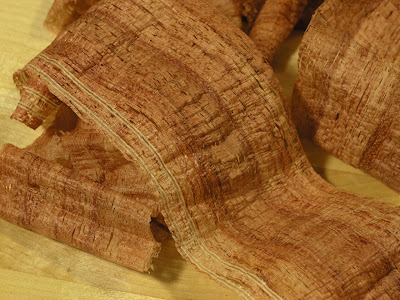PART 2.
Over the weekend I did some prepping for this part of the job. As my bench top wasn't really flat I made the effort to make it so by planing it with my Bevel-Up Jack plane and refinished it with "The Good Stuff".
The planing of the back went fine but boy was it tough to do. 100 push-ups... piece a' cake; Planing 1mm of a plate of bubinga is another matter. If I was to do this for a living I might be able to run for Governor of California someday. I never thought I would say this, but sharpening my plane blade and measuring was welcome interruptions to this herculean task.
If anybody who hasn't tried to thickness their back plates the old fashioned way but want to have a go, this is the mantra:
- Make sure the sole of the plane is flat
- Keep your blade sharp and resharpen often
- Set the blade to cut very fine shavings
- Keep the mouth (of the plane) very tight.
For me the key was to sharpen the blade often, keep it on a fine setting and drive it through the work in long even straight strokes. I think I resharpened three time during the process of taking the plate down 1-1.2mm. Most of the time I also overlapped the strokes by half a width, which decreased the sheer muscle needed, though with the blade freshly sharpened I couldn't resist temptation of trying to produce thin shaving in full width - probably a novelty value, but then again maybe not as it was so thrilling to see the plane spit out these fat curls on after the other.
The plates ended up with a with a final thickness of 2.0-2.1mm (~0.080-0.085"), thickest in the middle. Most books recommend 0.085-0.095" but since this guitar is going to be 11% smaller than a standard classical. I hope being on the thin side is appropriate.





No comments:
Post a Comment